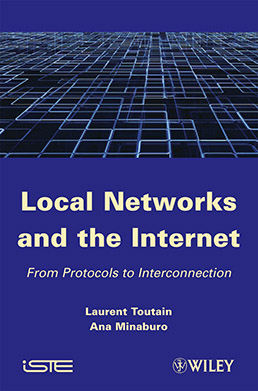
Local Networks and the Internet examines the technologies most commonly used in the Internet and in local intranets, in their design and development. It explains the relationships between the various important standards, as well as their objectives and their technical content. The relationships between different address levels (MAC, IP addresses, autoconfiguration protocols) are presented in extensive detail. Precise knowledge of these protocols allows for the efficient design of systems and different options for network / device interconnection by bridges, switch, virtual networks or by routers to be approached. The allocation plan for IP addresses, and the development of the concept of an IP address going from the sub-network mask to classless inter-domain routing (CIDR), has allowed us to understand and carry out the connection of a local network to the worldwide network that constitutes the Internet.
This book also details the routing protocols used in private or operator networks. Quality of Service (QoS) management methods such as resource reservation with RSVP, or differentiated services, are discussed, and the use of IP networks on public networks (Frame Relay, X.25, etc.), network administration and programming applications in the Unix domain are also covered.
Enriched with numerous examples and applications, this book places protocols in their context, without simply acting as a facile translation of standards or RFC. Destined for students, engineers, and system or network administrators, this book provides an indispensable technical, architectural, and practical enlightenment on the technologies used for the creation and implementation of Internet services and products.
1. Introduction.
2. Standardization and Wiring.
3. Ethernet and IEEE 802.3 Protocols.
4. The LLC and SNAP Sublayers.
5. Interconnection by Bridges: The Spanning Tree Algorithm.
6. Internet.
7. IP Protocols.
8. Level 4 Protocols: TCP, UDP and SCTP.
9. Address Resolution and Automatic Configuration Protocols.
10. Routing Protocols.
11. Internal Routing Protocols.
12. External Routing Protocols.
13. Virtual Local Networks.
14. MPLS (MultiProtocolLabelSwitching).
15. IP on Point-to-Point Links: PPP.
16. Network Administration.
17. Security.
18. Flow Management.
Laurent Toutain is an Associate Professor at ENST Bretagne, France.